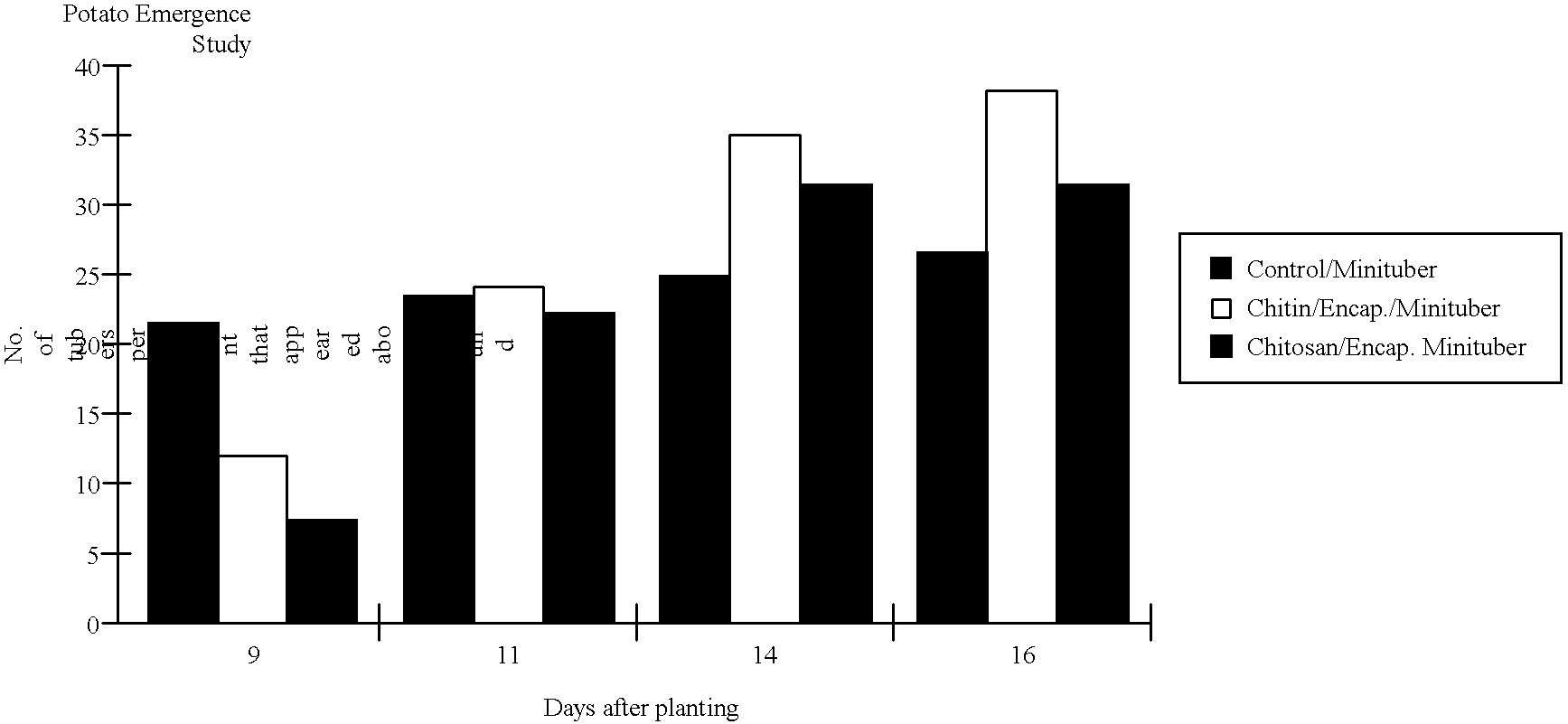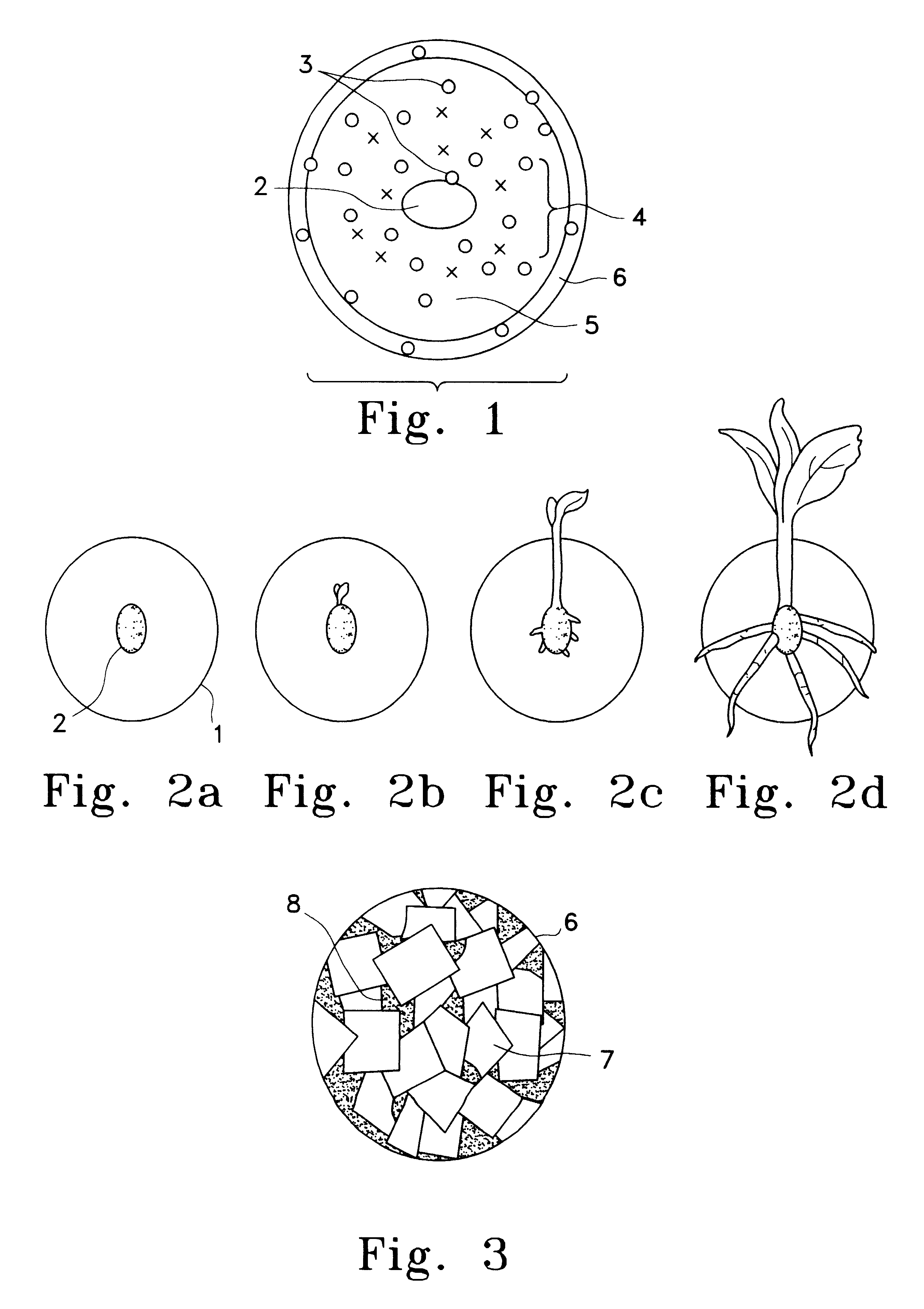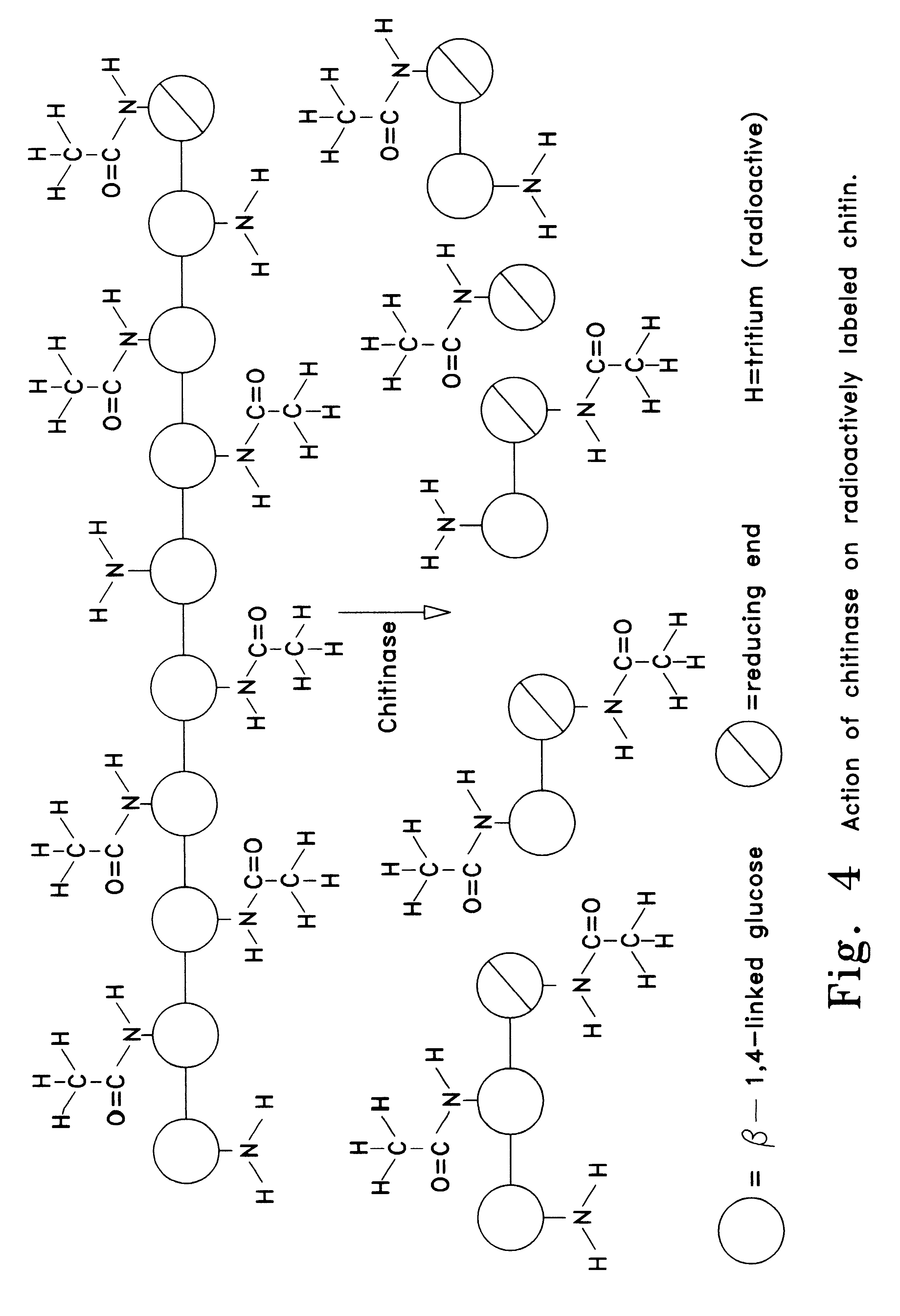Tuber planting system comprising chitin or chitosan
a planting system and plant technology, applied in the field of plant transplantation, can solve the problems of difficult disease control, difficult to achieve or difficult goals, and relatively short growing season, so as to enhance the emergence and yield of propagules, increase the shelf life of seeds, and enhance the effect of emergence and yield
- Summary
- Abstract
- Description
- Claims
- Application Information
AI Technical Summary
Benefits of technology
Problems solved by technology
Method used
Image
Examples
Embodiment Construction
As can be seen from the drawings, the basic concepts of the present invention may be embodied in many different ways. FIG. 1 shows a cross-section view of an encapsulated tuber. This represents a preferred embodiment of the present invention. As shown, encapsulant (1) may completely surround some propagule such as tuber (2). Encapsulant (1) may also include or be composed of a non-damaging stimulus (3). As discussed in detail later on, non-damaging stimulus (3) acts to organically control disease and thus achieve some of the goals of the present invention.
As shown in FIG. 1 it can be seen that non-damaging stimulus (3) may be provided in a vicinity of the propagule. This vicinity (4) may represent some spherical volume surrounding tuber (2) (as shown) or may merely be within some distance of the propagule. This distance should, however, be sufficiently close so that non-damaging stimulus (3) or its effects can, through some mechanism, be communicated to the propagule so as to affect...
PUM
 Login to View More
Login to View More Abstract
Description
Claims
Application Information
 Login to View More
Login to View More - R&D
- Intellectual Property
- Life Sciences
- Materials
- Tech Scout
- Unparalleled Data Quality
- Higher Quality Content
- 60% Fewer Hallucinations
Browse by: Latest US Patents, China's latest patents, Technical Efficacy Thesaurus, Application Domain, Technology Topic, Popular Technical Reports.
© 2025 PatSnap. All rights reserved.Legal|Privacy policy|Modern Slavery Act Transparency Statement|Sitemap|About US| Contact US: help@patsnap.com



